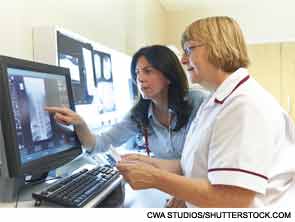Explore This Issue
September 2013
—John F. Kokesh, MD
Health Care Reform
“As health care reform moves toward payment methods other than fee-for-service, TM may help practices increase their efficiency,” said Dr. Holtel. “As incentives change toward keeping people out of hospitals and telemedicine helps to monitor or follow people in their homes and keep them from getting sicker, the easier that goal could be reached.”
The services a practice uses, and the order in which they are rolled out, depends on what the physicians want to accomplish and the operating environment. For areas where appointment books are full, Web portals or other patient-access technologies may be a good first entry point. If there is white space in your appointment book, employing store-and-forward programs or videoconferencing to increase referrals may be a better use of a practice’s resources.
“One mistake practices make is buying telemedicine equipment and then deciding what to do with it,” said Dr. Antoniotti. “You first need to understand your clinical practice and what you want to accomplish. Find the markets you want to serve and then look for the technology that best services them.”

Look to Current Workflow
Practices should look closely at their current workflow and methods and replicate them in the virtual space. Consider staffing needed at the remote site and the types of services that will be provided. “The remote site will need a telepresenter trained in the use of equipment such as a video otoscope,” said Dr. Antoniotti. “This is usually an RN, although it might be a primary care doctor if the clinic is co-located with them. It is seldom that this person is used full-time in this capacity.”
Instituting TM is no different from opening up any other office. You will need to do staff credentialing, find an appropriate facility, buy the equipment needed and make sure necessary training is completed.
The associated costs are largely related to buying the equipment. As a general rule of thumb, initial outlays are likely to be around $10,000 to set up a patient exam room. This includes the video system, patient camera and instruments such as an otoscope. The bulk of the costs for a broadband connection and information technology assistance are already included in a practice’s infrastructure and are marginal.
Leave a Reply